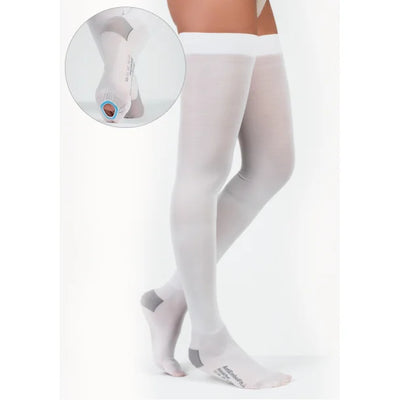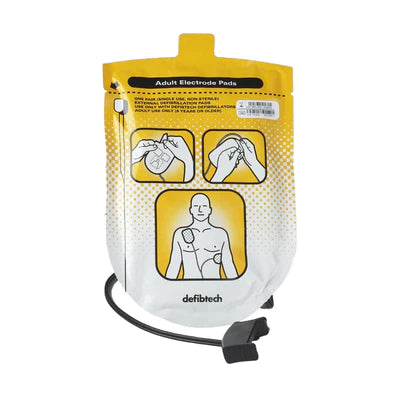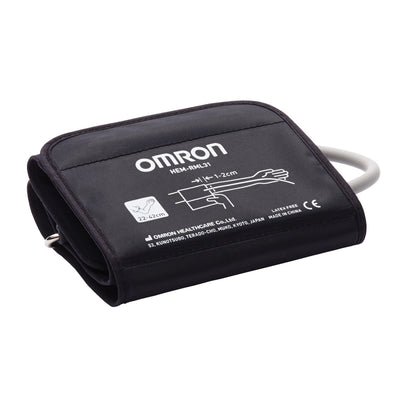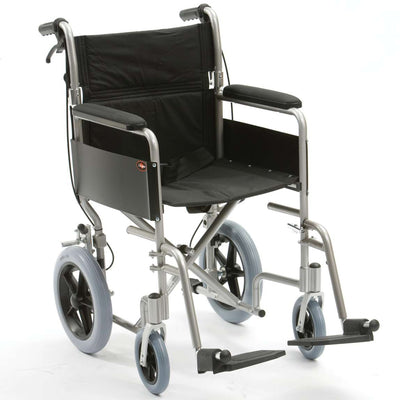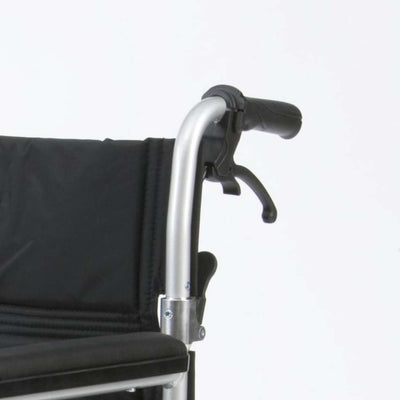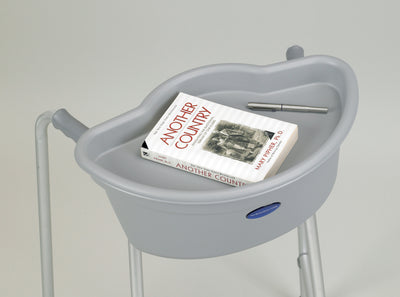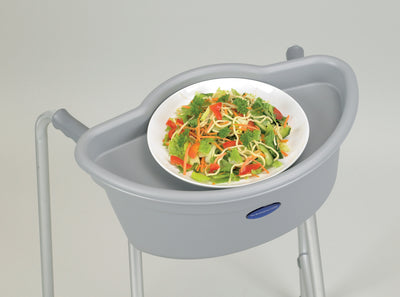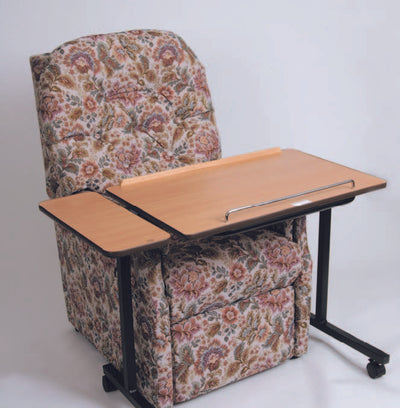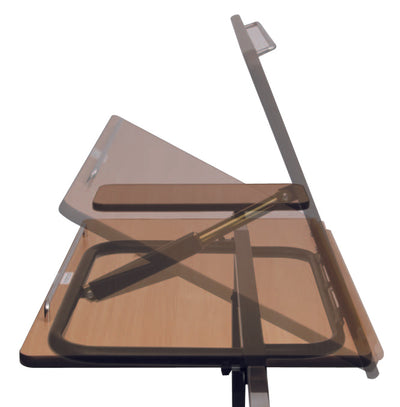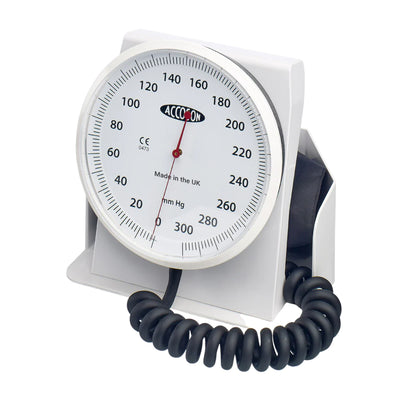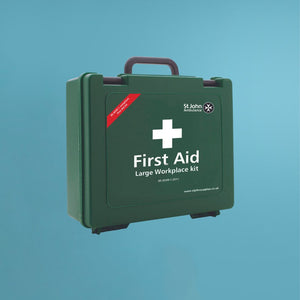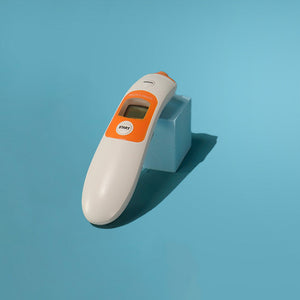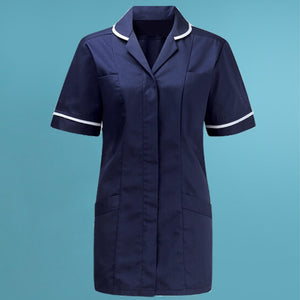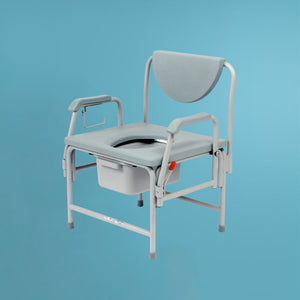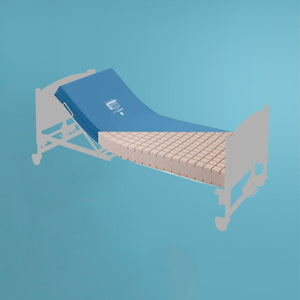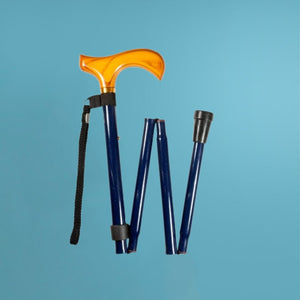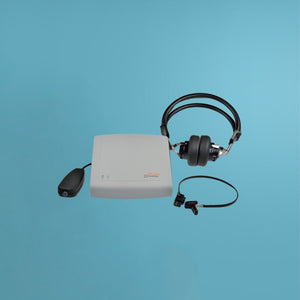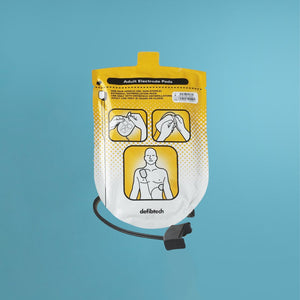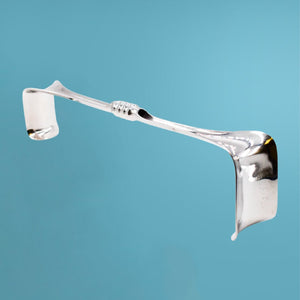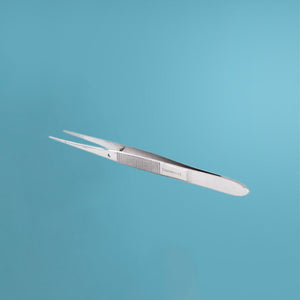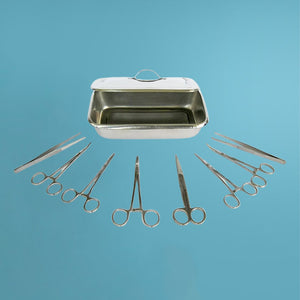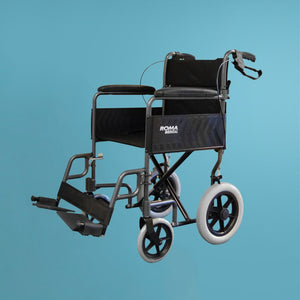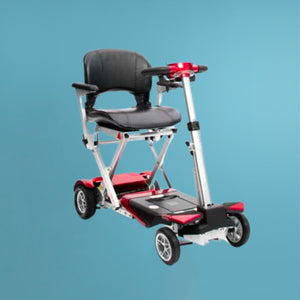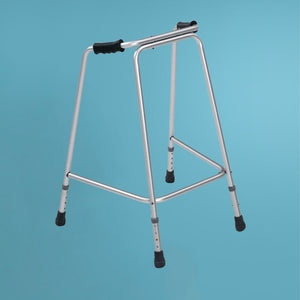Blogs

The ultimate wheelchair buying guide 2023
11.12.2023
Ultimate Wheelchair Buying Guide
Wheelchairs are a must-have for people with disabilities or difficulty moving due to injury or illness. In this easy-to-understand guide, we'll discuss different aspects of wheelchairs, including types, features, and what to look for when buying one. By knowing these things, users and caregivers can make smart decisions to improve mobility and quality of life. Let's jump right in!
What type of wheelchair should you use?
Wheelchairs are devices made to help people with disabilities or limited mobility get around more easily. There are mainly two types: manual wheelchairs and power wheelchairs. Manual wheelchairs need the user's strength or help from a caregiver to move, while power wheelchairs use electric motors and batteries to get going. Each type has its pros and cons, depending on what the user needs.
Manual Wheelchairs
Pros:
Cost: Manual wheelchairs tend to be on the cheaper side
Lightweight: With fewer electronics and machinery these wheelchairs are easier to transport and manoeuvre.
Low maintenance: less tech involved, fewer things to worry about!
Exercise: Users of manual wheelchairs can get some physical exercise by pushing themselves. This is beneficial for both muscular strength and cardiovascular health.
Cons:
Physical effort: Of course, these wheelchairs are not suitable for all users.
Limited speed: manual wheelchairs can only go as fast as you can push them!
Hard to use on some surfaces: it can be difficult to traverse difficult ground or even slopes. Make sure you know where you are going with your manual wheelchair.
Electric Wheelchairs
Pros:
Ease of use: doesn’t require physical effort to get these to move. Perfect for those with limited mobility
Speed: you can get around much quicker in these wheelchairs. Some can reach 10 mph or even more!
Travel over difficult terrain: Electric wheelchairs can navigate through many different surfaces and can even tackle slopes.
Customisable: some electric wheelchairs can be customised to fit any needs that the user may have
Cons:
Cost: it goes without saying that electric wheelchairs are more expensive. Even more reason to research well before you buy to get your money’s worth.
Hard to transport: electric wheelchairs tend to be heavier and can be difficult to transport.
Needs charging: without a charged battery, your electric wheelchair will not move around much. Make sure you charge the battery before you leave.
What to look out for when buying a wheelchair?
Some factors to consider when choosing the most suitable wheelchair include size and weight capacity, reclining and tilt features, transferability, storage and transportation, comfort and posture, terrain compatibility, safety features, and maintenance requirements.
Now let's talk about the features you should look for when buying a wheelchair:
Comfort: Make sure the wheelchair has a comfortable seat and backrest, as well as adjustable and padded armrests and footrests. Make sure the wheelchair is fit for purpose.
Size and weight capacity: Check that the wheelchair can accommodate the user's size and weight, and is not too wide or narrow for their body.
Reclining and tilt options: These features can help with pressure relief and make it easier to change positions throughout the day.
Easy transfers: Look for a wheelchair with removable or swing-away armrests and footrests to make transfers smoother.
Storage and transportation: Consider a wheelchair that's foldable or easy to disassemble for transport in a vehicle.
Terrain compatibility: Ensure the wheelchair can handle different types of terrain, such as grass, gravel, or uneven surfaces.
Safety features: Brakes, anti-tip wheels, and seat belts are essential for user safety.
Maintenance: Be aware of how much maintenance the wheelchair needs and if replacement parts are readily available.
Storage: Consider how much space you will need to store the wheelchair. Look for one that folds up or comes apart into pieces, so you can easily store it away. That way, you won't have to worry about finding a convenient place to keep your wheelchair when it's not in use.
When purchasing a wheelchair, buyers should pay close attention to these listed factors and more. At Mediworld we want to help you spend wisely.
Extra factors to consider
Choosing the right wheelchair is a critical decision that can significantly impact a person's mobility, independence, and overall quality of life. With various options available, it's essential to thoroughly look over these factors before making a decision.
Assessing the user's specific needs, preferences, and physical abilities. Consider the lifestyle, daily activities, and physical requirements when choosing a wheelchair. Specific factors to consider along these lines will be upper body strength, endurance, and any specific medical conditions that may affect mobility or comfort.
Obtaining a doctor's prescription and insurance coverage information. Consult with a healthcare professional to obtain a prescription for a suitable wheelchair based on the user's needs. Research the extent of insurance coverage for the wheelchair and any additional costs associated with customization or accessories.
Evaluating wheelchair features such as size, weight capacity, and adjustability: Choose a wheelchair that provides the necessary support and comfort by considering factors like seat width and depth, weight capacity, and adjustability of backrests, armrests, and footrests. Check that the wheelchair is easy to manoeuvre.
Consider maintenance requirements, warranties, and repair services. Look into the maintenance requirements of the wheelchair, including the frequency of servicing and replacement parts. Opt for a model with a comprehensive warranty and reliable repair services to minimise downtime and ensure long-term usability.
Reading online reviews and ratings from other users and consulting with medical professionals. There are many online reviews from other wheelchair users out there that you can rely on for some insight into the performance and reliability of different models.
Exploring physical therapy and exercise options to maintain strength and mobility for manual wheelchair users. Manual wheelchair users should engage in regular physical therapy or exercise programs to maintain and improve strength, flexibility, and endurance.
Considering additional factors for an informed decision: Evaluate factors like customer support, brand reputation, trial periods, return policies, and available accessories to ensure the chosen wheelchair meets your needs and preferences. Customization options can also be explored to fit the wheelchair to the user's specific requirements.
By taking these factors into account, individuals and caregivers can make informed choices that best suit their unique needs and circumstances, ultimately improving their daily experiences and overall well-being.
What is the average cost of a good wheelchair?
The cost of a wheelchair can really differ based on things like the type, features, materials, and reputation of the brand. You'll find that manual wheelchairs can cost anywhere between $200 and $500, while power wheelchairs might be priced from $1,000 to $15,000. When you're trying to find a good-quality wheelchair that's also cost-effective, it's important to think about insurance coverage, get a prescription from your doctor, and check out warranty options.
Additionally, it is essential to research various financing options, discounts, and government programs that can help offset the costs. To start you off, have a look at the NHS website and the information regarding buying/renting wheelchairs.
Besides financial help, you might want to check out local and online support groups, as they can give you advice on the best places to buy or rent wheelchairs and might even recommend specific models or brands. At the end of the day, taking the time to explore all the resources out there will help you make the best decision when it comes to getting a wheelchair, making sure you get the ideal solution for your mobility needs.
Fit for purpose
Measuring the size of a wheelchair is an important step in ensuring that the chair fits properly and provides optimal comfort. To measure, you will need to take measurements of your body as well as the dimensions of the wheelchair itself.
For your body, you should measure from shoulder to hip while seated in a comfortable position, then add 2-4 inches depending on how much room you want between yourself and the backrest. You should also measure from knee to ankle while sitting with your legs at 90 degrees to have enough space for leg rests or footplates.
To measure the wheelchair itself, start by measuring its width (from the armrests) and depth (from the seatback). Then check if it has adjustable components such as height-adjustable arms or reclining backs that can be adjusted according to individual needs.
Selecting the right wheelchair is a crucial decision that can significantly impact the user's independence, mobility, and overall quality of life. Considering the factors discussed in this guide, individuals and caregivers can make informed choices that best meet their needs, preferences, and circumstances. A carefully chosen wheelchair can enhance the user's daily experiences and foster a sense of autonomy and dignity. Mediworld offers a range of quality wheelchairs at affordable prices, ensuring accessibility to all. Visit our website to purchase your ideal wheelchair today.
Mediworld’s Recommendations
To close off this guide, we'll explore the top 5 wheelchairs available at MediWorld, to get you started on finding the perfect mobility solution for your needs.
PneuTec Fully Reclining Wheelchair
The PneuTec Fully Reclining Wheelchair is the quintessential choice for individuals seeking unparalleled comfort, affordability, and exceptional features. This ergonomically-designed marvel boasts many amenities, ensuring its users experience optimum satisfaction while traversing the vicissitudes of daily life.
One of the most salient attributes of this wheelchair is its fully reclining back, which offers a variable angle adjustment from 90 to 180 degrees. This innovative feature facilitates customized comfort for users, allowing them to find the perfect position for any situation, whether resting or navigating bustling urban landscapes.
Additionally, incorporating puncture-proof wheels ensures the wheelchair remains unyielding to external forces, providing a sense of security and dependability. The 60cm/24" self-propelling rear wheels, coupled with the 20cm x 50cm front swivel castors, enable effortless manoeuvrability, making it ideal for users who require a high degree of mobility.
Moreover, the flame-retardant, upholstered vinyl seat and back prioritize user safety and exude luxury. The detachable headrest extension and padded armrests further enhance the overall comfort, catering to the users' diverse needs.
Regarding dimensions, the wheelchair's thoughtful design accommodates users of various sizes, with a maximum weight capacity of 114kg. The adjustable features, including the height-adjustable footrests, offer versatility and adaptability, catering to individual preferences.
Roma Transit Wheelchair
The ROMA Transit 1430 Wheelchair amalgamates an ergonomic design with high-quality materials, providing users with a seamless and enjoyable experience.
A salient aspect of this wheelchair is its pneumatic rear wheels, ensuring smooth navigation over various terrains. The 20cm front solid tire swivel castors enhance manoeuvrability, making it ideal for individuals seeking ease of movement and adaptability.
The wheelchair's attractive chrome steel finish guarantees durability, rendering it a low-maintenance option. Its crash-test approval and progressive parking braking system solidify the commitment to user safety, instilling confidence in the product's performance.
Comfort is paramount with the flame-retardant upholstered vinyl seat and back, providing users with peace of mind. The padded armrests and swing-away detachable footrests, adjustable in height and equipped with heel straps, elevate the overall comfort experience, catering to the diverse needs of users.
Moreover, the optional elevating leg rest (AC100) offers versatility, allowing users to customize the wheelchair according to their preferences. The wheelchair's dimensions accommodate various body types, with a maximum user weight of 114kg, ensuring accessibility to a wide range of individuals.
Roma Sirocco Electric Wheelchair
The Sirocco Electric Wheelchair from Roma Medical is an unrivalled choice for individuals seeking an advanced powerchair solution. A standout aspect of the Sirocco is its impressive 25-mile range and rigorous crash testing accreditation, instilling unwavering confidence in its performance and safety. The rear anti-tip wheels enhance stability and facilitate seamless outdoor navigation, while the compact frame and 58cm turning radius enable smooth manoeuvring indoors.
Affordability does not compromise quality in the Sirocco. Its spring shock system on the rear wheels ensures a comfortable ride, even on uneven surfaces. Standard features such as solid tires, height-adjustable flip-up armrests, clothing guards, and swing-away detachable footrests provide a luxurious experience at a reasonable price point.
The wheelchair's fold-down back is adjustable in height, allowing users to customize their seating preferences. The joystick controller, which can be mounted on either side, offers adaptability and convenience. Puncture-proof tires provide peace of mind, ensuring users can traverse various terrains without concern.
Roma Heavy Duty Self-Propelling Wheelchair
The Roma 1472 Heavy Duty Self-Propelling Wheelchair is the quintessential choice for those seeking a robust and reliable mobility solution. Combining remarkable features with a bariatric-friendly design, this wheelchair caters to users who require both resilience and comfort in their daily lives.
Crafted with a robust steel frame, this self-propelled wheelchair features a 20" seat width, accommodating a maximum user weight of 22 stone. Its chrome-plated steel construction ensures the chair withstands everyday wear and tear while providing unwavering support.
The 60cm self-propelling spoke pneumatic rear wheels and 20cm front solid tire swivel castors make for effortless navigation, granting users enhanced independence and adaptability. Upholstered in flame-retardant vinyl, the seat and back prioritize safety without compromising comfort.
Padded armrests add an extra layer of luxury, ensuring users enjoy a pleasant experience during use. The swing-away detachable footrests, adjustable in height with heel straps, provide a customizable and convenient solution for various leg lengths and positioning preferences.
An optional elevating leg rest (AC100) grants additional versatility, enabling users to tailor the chair to their needs. With its crash-test certification and progressive parking braking system, the Roma 1472 wheelchair demonstrates an unwavering commitment to user safety and security.
Standard Car Transit Wheelchair
The Standard Car Transit Wheelchair epitomizes the perfect fusion of style, practicality, and comfort, making it an unparalleled choice for commuters seeking a dependable mobility solution. With its elegant design and myriad features, this wheelchair ensures that users can travel with ease and confidence.
Constructed with both aesthetics and durability, the wheelchair boasts padded armrests, a cushioned seat, and a height-adjustable footrest tailored to accommodate users' specific requirements. The 30cm wide wheels, equipped with puncture-proof tires, provide travel safety and peace of mind.
Two axle bushings cater to 60- or 30-cm rear wheels, offering versatility and adaptability for various terrains and conditions. The progressive and parking braking system demonstrates a commitment to safety, ensuring users remain secure during transit.
Swing-away detachable footrests with heel loops contribute to the chair's convenience, making it easy to get in and out. An optional elevating leg rest (AC100) adds further customization, allowing users to modify the chair to their unique needs and preferences.
Learn More Now

When are Wheelchairs used?
18.07.2024
Wheelchairs are an important mobility device used by people with various conditions that limit their ability to walk or move independently. While some individuals may only require a wheelchair temporarily, others may need it on a permanent basis. The reasons people use a wheelchair are diverse, ranging from injuries, diseases, or congenital disabilities.
Injuries
This type of injury often results in paralysis or loss of sensation below the injury site, making it impossible for the affected individual to walk or move around without assistance. Other conditions that may lead to the use of a wheelchair include stroke, multiple sclerosis, cerebral palsy, muscular dystrophy, and arthritis.
Injuries, such as traumatic brain injuries or amputations, can also lead to using a wheelchair. Individuals with amputations often require a wheelchair temporarily as they adapt to their prosthetic limb. A wheelchair provides the necessary support and mobility during this period of adjustment. Traumatic brain injuries can result in a loss of coordination or balance, making it difficult to walk or move around independently. A wheelchair provides stability and safety for the individual.
Health Conditions
Individuals with cerebral palsy often experience muscle stiffness or spasticity, making it difficult to walk or move around without assistance. In such cases, a wheelchair provides the necessary support and mobility for the individual. Similarly, muscular dystrophy is a genetic condition that weakens the muscles over time, leading to the loss of mobility. A wheelchair may be needed to compensate for the weakness and enable the individual to move around independently.
Arthritis is another condition that may require the use of a wheelchair. This condition is characterized by inflammation and damage to the joints, leading to pain and stiffness. Individuals with severe arthritis may find it challenging to walk or stand for extended periods, and a wheelchair provides relief and mobility.
Age-related conditions
Furthermore, age-related conditions such as Parkinson's disease, dementia, and Alzheimer's disease can also lead to mobility challenges that may require the use of a wheelchair. Parkinson's disease, for instance, affects the nervous system, leading to tremors and muscle stiffness that can impact mobility. Similarly, dementia and Alzheimer's disease can cause confusion and disorientation, leading to safety concerns while walking or moving around independently.
The reasons people use a wheelchair are diverse and complex. They range from congenital disabilities to age-related conditions and injuries. The associated conditions that require people to use a wheelchair include spinal cord injuries, cerebral palsy, muscular dystrophy, arthritis, traumatic brain injuries, and age-related conditions. Regardless of the cause, a wheelchair is an essential tool that provides individuals with the necessary support and mobility to lead a fulfilling and independent life.
Learn More Now

